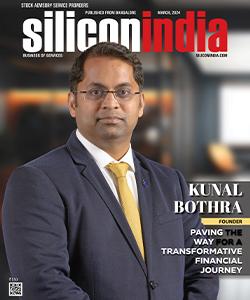How to choose the Best Mutual Funds
By
siliconindia | Monday, August 1, 2011

Bangalore: The Indian Market offers more than 3000 mutual funds. The greatest strength of mutual funds is their accessibility and simplicity. Mutual funds have both-pros and cons. The best part is that you have funds which specifically suit your needs and risk profile. The worst part is selecting the finest one for you. Each Mutual fund has its own rewards and risks. Higher the potential return, higher the risk of loss.
You should be able to evaluate a mutual fund before you choose the right one for you. It is important to know the objective of the fund, the fund manager and his/her own records and portfolio composition. Almost anyone can buy mutual funds and are easy to understand. Here are a few basic things you need to do to select the best mutual fund for you.
Knowing your basics:
It is extremely important for you to know what a mutual fund is and how it works, what its pros and cons are before finding the right mutual fund for yourself. Equity Mutual funds, Debt Mutual Funds, balanced Mutual Funds and Liquid/ Money Market funds are a few available options to invest in. Also there are time based funds, asset based funds, and investment based funds. Learn the different types and classification of funds before you in
Investment Objective:
Draw down your investment objective. Various schemes for different needs are available in the market. Like retirement plans, capital growth, dividend based etc. Identify your goal, determine your risk tolerance and have a plan before you invest in a mutual fund.
Compare and Contrast:
Compare each funds past performance as it is one of the most commonly used criteria. However, it is one of the most overrated indicators as past performances are not an indicator of future results. Compare each fund's historical returns to an appropriate benchmark, such as the fund's relative category average or an index. For example, performance for most stock mutual funds is compared to the S&P 500 Index.
Expenses and Costs:
Fees and expenses are a direct haul on investment returns. Over long periods of time, funds with low fees and expenses perform better than those with higher relative expenses. Though Mutual funds are perhaps the cheapest option available to retail investors, it is good to check exit load applicable. Know exactly how much the fund charges in terms of exit loads and management fees. Only consider mutual funds with an Expense Ratio below 1 percent. Also, avoid sales charges (loads) by using only no-load funds.
Growth or Dividend:
With growth scheme, all profits made by the fund are plunged back into the same scheme. One does not get income during the investment period but only at the time of maturity causing the NAV to rise over time. In the dividend option, profits are not re-invested; instead, it is given to the investor from time to time. The investor has options of either cashing on the dividends or go for dividend re-investment. Generally, funds whose NAV is above 10 are in a position to consider a dividend. Remember, though, declaring a dividend is solely at the fund's discretion; the periodicity is not certain nor is the amount fixed.
Choose the Right Mutual Fund Advisor:
A Fund advisor helps you choose the right fund for you. Selecting the right fund advisor is as important as choosing the right fund scheme. Investment Viewpoints, Client Service, and his/her Financial Planning Value are key factors that you choose your fund advisor on. Also see the past performances of the various funds that he handles.
These points could serve as guiding principles for deciding which mutual fund is the right one for you. And make sure you analyze the pros and cons before investing and do take into account the tax impacts and income requirements.

